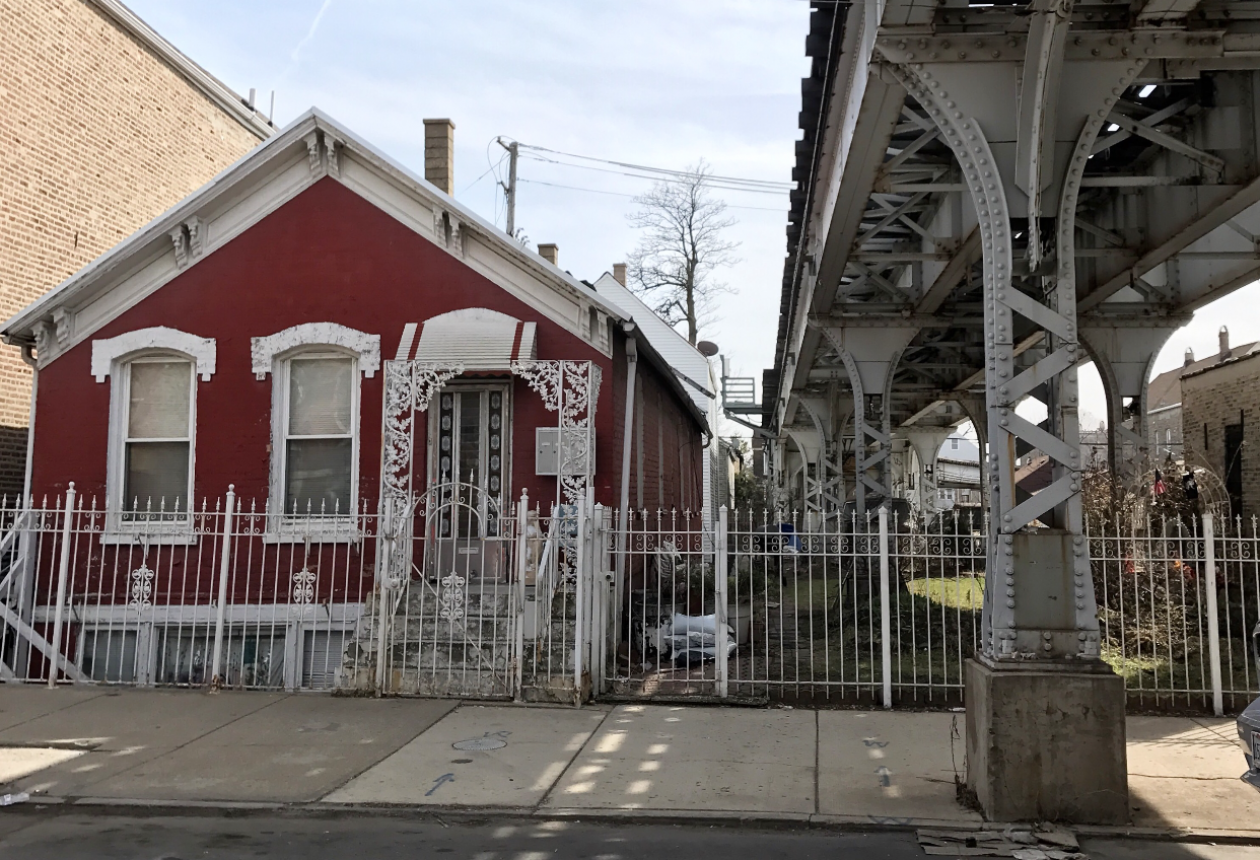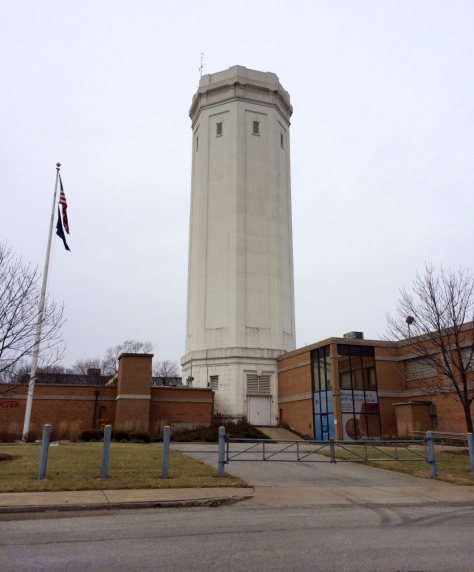
On October 13, 2015, Illinois Governor Bruce Rauner held a news conference in Chicago, presenting an aggressive, but perhaps not surprising plan to sell the Helmut Jahn-designed James R. Thompson Center, constructed in 1985. As reported by the Chicago Tribune, it is proposed that the building be sold for cash at a public auction, the over 2,000 state workers moved elsewhere, and demolished, making way for the same-old same-old high-density, mixed use, regrettable architecture.
Rauner had this to say:
“This building is ineffective. For the people who work here, all of whom are eager to move somewhere else, it’s noisy. It’s hard to meet with your colleagues. It’s hard to move through the building, very ineffective, noise from downstairs, smells from the food court all get into the offices”
A lot of people hate this building, but not for its architecture. Taxpayers in Illinois famously hissed over its $172 million dollar price tag, nearly twice its original budget, and a part of history that rings in the ears of people across the state as Springfield continues its own budget deadlock. Helmut Jahn, irresponsible Starchitect and GQ cover subject was so obsessed with the building’s aesthetics that he neglected to develop a way to cool the interior properly, leaving state employees sweating it out for years.
Historic architecture in Chicago’s Loop has been serving the same non-offensive menu year after year, expertly taste-tested by historians, tourists and Chicagoans. Daniel Burnham is clearly the meat course, with Louis Sullivan and his curvilinear forms the vegetables. The starch course is the Rookery, the Railway Exchange Building, and the Reliance Building, with Ludwig Mies Van Der Rohe acting as dessert, which many pass on for the swags and acanthus patterns that remain snug and safe along with everything else we have spoiled our appetite with. It’s an outdated bill of fare. It comes as no surprise that the Thompson Center as great architecture was a hard sell as new architecture in 1985, and a hard sell thirty years later as we look forward.
Visit the Thompson Center at noon, and it’s easy to find another reason to hate it. It’s the food smell capital of the Loop. Pizza, Dunkaccinos, Chinese food and Popeye’s all hotboxing inside the steel and glass rotunda. It’s filled with the anxious energy of coworkers in khakis with key cards, camping out at tables downstairs and chewing on the last cubes of ice from their fountain drinks before heading back to their cubicles. Businesses like GNC and the curiously placed Amerinka’s Native Arts & Craft feel as if they are just loitering, and there is certainly a lot of that. People are everywhere, and they are their own system within the building. It’s a frenzy of modern urban life. Chicago is filing for licenses, paying fees, and getting off the train. Then there is the fatal attraction of the building’s spiraling marble floor, a target for nearly a half a dozen jumpers since the building opened thirty years ago.
There is no way to deny the psychological effect of having to go to the DMV, which is another reason the Thompson Center is lauded. Put people in a building where it is expected they will have to wait, experience terrible customer service and inevitably not have the correct form or piece of documentation and it’s impossible to get them to even notice the muted Post-modern color palate as anything more than “puke pink and ugly blue.” It’s like hating U2 because Bono is a pompous ass, and not because every album they’ve put out since 2000 has been crappy.
With a reported $100 million in deferred maintenance, the building has seen better days. The granite panels that served to provide drama to the pedestrian arcade surrounding the building, and as a corral for Jean Dubuffet’s striking Monument with Standing Beast (aka “Snoopy in a Blender”) have been removed. Interior surfaces are rusty, HVAC grates have been kicked in, and there are multiple areas of water damage and spall. But perhaps nothing is as blatantly obvious as the dinginess of the building’s exterior glass panels. It looks dirty from across the street, from above, and from the sky. It’s embarrassing.
This neglect, along with the sub-par tenants and failed driving tests, has given the building a messy reputation, and serves to toxify discussions about the building’s architectural merit. But the new school of cultural heritage preservationists are undaunted, and encouraged by the opportunity to sit on a precipice of sorts, both with the opportunity to preserve postmodern heritage, some of which is just as old as the people in the movement; and aligning that with new ways to talk about how to preserve the architecture of the places that matter. As we move towards a future of cultural resources management where we look at time as more fluid in determining significance, and reject a traditional attitude towards what we consider historic, the sooner we will realize we can serve buildings better, be better stewards and most importantly; serve people by saving beautiful places. And the James R. Thompson Center is a beautiful place.
It’s that magic formula of brains, beauty and fun that makes the Thompson Center a stone cold stunner. Its overstated rotunda is a winking reference to nearly every state capital or county building constructed in the 19th century. Encompassing an entire city block, the primary entrance is set back and tilted towards Chicago City Hall and the Richard J. Daley Center, indicating that the building’s relationship with its surrounding area is a public one.

The colonnade hugging the buildings rounded primary façade is supersized Ancient Rome, and made a conscious decision to ignore all of the architecture afterword until Jahn hit the drawing board in the early 1980s.
Inside, the ceiling soars and the materials are glossy and reflective, while the buildings’ expressed structure focuses and projects.
Light standards are not on the sidewalk outside, but within. And the stairways and escalators have been pulled out from the center core of the building, and placed on the walls of the soaring cavity of the atrium, like fully functioning organs pulled outside of the body. It’s a living organism, a human sized, breathing ant farm. The movement is constant.
The dusty cobalt and creamy tomato soup color palate is America Lite, a political statement that lives comfortably with the Thompson Center as a governmental building. The basic pleasure of the colors and their placement in strong geometric fields appeal to the LEGO builder in you. This is not your father’s Modernism. This is a world where we were imagining the future of buildings, the future of government, and the future of us. On Hoverboards. Even the idealized future is an authentic part of our past, and helps us determine what we build.
Like a song made better as a cover, perhaps the Thompson Center could be improved upon and reimagined using the same care applied to the restoration of other significant; but more mainline, historic Chicago buildings. The cost of repairing the building’s originally failed systems would pale in comparison to the millions of dollars spent to repair Frank Lloyd Wright buildings that were built without downspouts, because Wright didn’t like the way they looked on his vertical line-challenged designs. While each restoration project is unique, Wright’s buildings are a dime a dozen, and Jahn’s is truly one of a kind. Buildings with great stewards like the ones responsible for the brilliant restoration of the Chicago Athletic Association into the Loop’s most creative new/old hangout should be inspiration enough that the nearly impossible is possible (and profitable, too!) Giving the James R. Thompson Center a more creative second life would have a substantial halo effect, both in terms of the preservation of Postmodern buildings, and in Chicago. A significant building worthy of a future we curate and create.



































